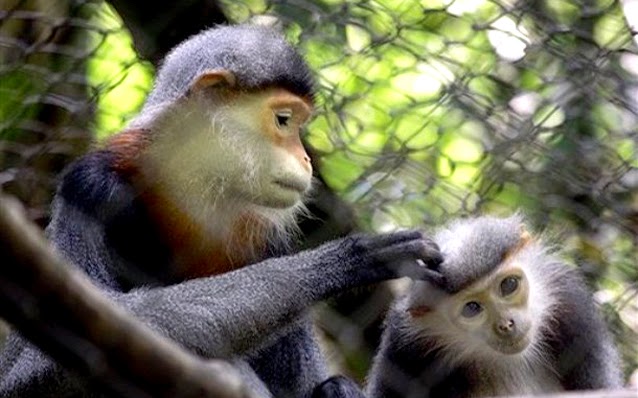visavietnam.net.vn - Cuc Phuong National Park, the first national park in the country, is a relaxing place for tourists to enjoy a few days exploring tropical rainforest and a wonderful place to escape to and provides the perfect backdrop for profound thoughts and musings about life.
Established in 1962, the 22,000ha forest stretches across three provinces: Ninh Binh, Hoa Binh and Thanh Hoa. Cuc Phuong hosts more than 2,000 kinds of plants, 2,000 kinds of insects, 122 kinds of reptiles and amphibians, 65 kinds of fish, and 133 kinds of animals.
Before reaching the forest, deep inside the Tam Diep mountains, the local motorway leads tourists through Ninh Binh's karst mountain ranges, where they can enjoy scenic lakes, caves and rice fields and glimpse the lifestyle of northern countryside farmers.
Yet the most relaxing moments are inside the forest, whether they are riding a bicycle along the lanes, jogging around Mac Lake near the entrance of the forest or trekking to the 1,000-year-old cho xanh (East Indian almond tree, or Terminalia Myriocarpa).
A green twig was moving in the green. Hien explained that it was an insect called bo que, or walking stick (carausius morosus), famous for its capability to camouflage itself in the environment.
"Such an insect can disguise itself as a green twig or a brown one depending on the tree that it lives in," Hien said, adding that there are 25 species of that insect in Vietnam, of which 20 can be found in Cuc Phuong. An adult "walking stick" can reach 60cm in length.
Through a vast land populated by wild banana, the guide said it was the most reliable source of fresh water in the forest. "Water from wild banana trunk tastes pretty acrid but it is safer than water from streams," he said.
"If you get lost, you can cut a wild banana trunk 20-30cm from the ground, make a horisontal hollow in the middle of the trunk and wait a few minutes. The water will soon come through the banana root to fill the hollow," he said, pointing to a wooden climber running along the path, flying from tree to tree, and said it was called day bam bam (woody liana). The longest one in the forest runs 2km long, he said.
Passing some small springs, deeper into the dense forest, Hien stopped at a banyan tree that almost completely covered the weak tree below. He explained that many banyan seeds were brought by birds to host trees. The seed grew thanks to nutrition from the host tree, which it gradually swallowed. For this reason, banyans were sometimes called "tree killers", he said.
The environment might look friendly to tourists, but for animals and plants there was fierce competition to survive. After more than one hour, they finally reached the famed thousand-year-old tree, which measures 45m in height and 5.5m in diameter. From the wide root emerge two steady trunks, which stand firmly on the ground and grow stunningly tall.
Tourists enjoyed the scarce rays of light leaking through dense
layers of leaves as they returned to the car park, felling happy that we had
done exactly as the forest management reminded: "Leave nothing but
footprints, take nothing but photographs."
And Cuc Phuong National park Travel Video:



















































.jpg)
.jpg)
.jpg)
.jpg)
.jpg)
.jpg)
.jpg)
.jpg)
.jpg)
.jpg)
.jpg)
.jpg)
.jpg)
.jpg)
.jpg)

.jpg)


